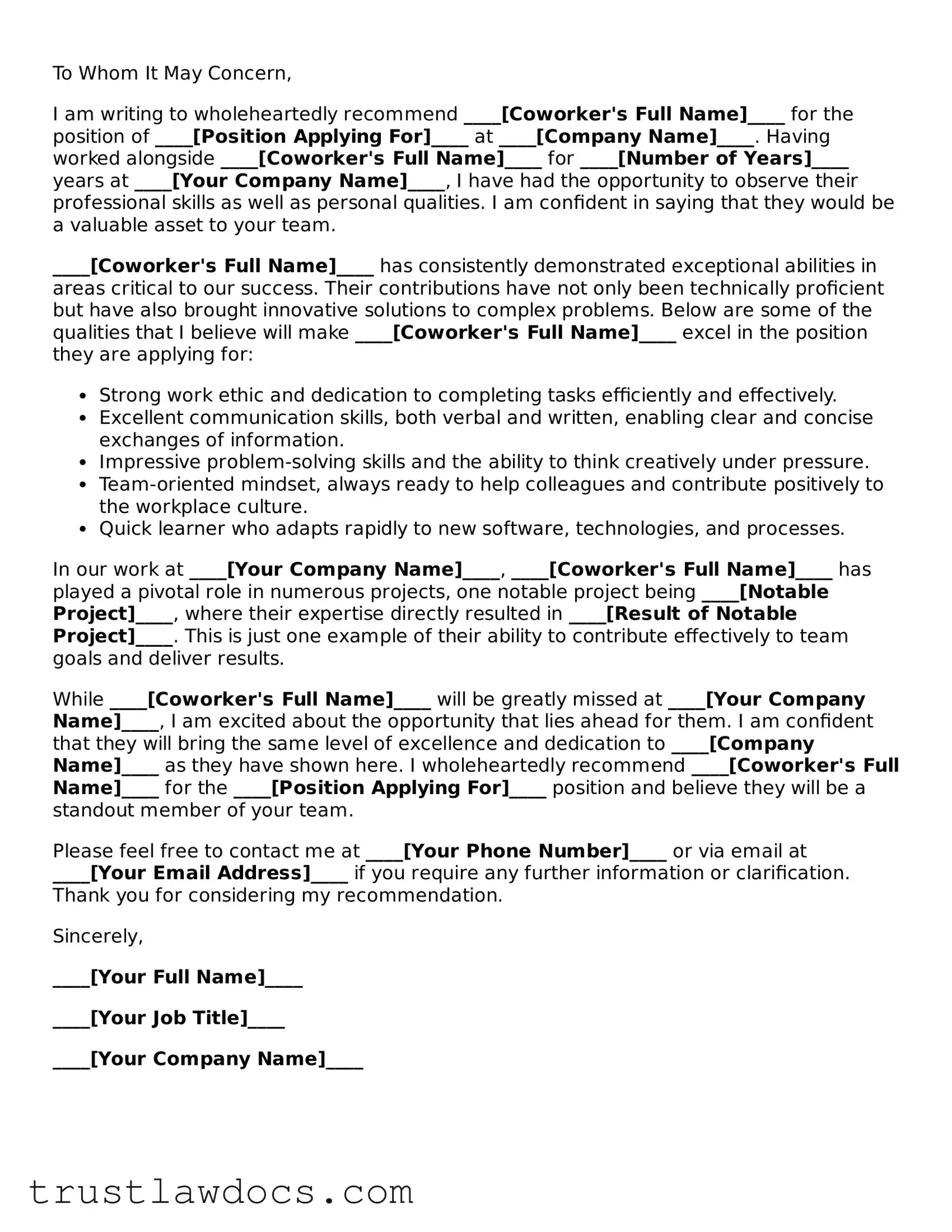What is a Letter of Recommendation for a Coworker?
A Letter of Recommendation for a Coworker is a document that endorses a colleague's professional abilities and personal qualities. This letter can be essential for their future employment opportunities, providing potential employers with a firsthand account of their skills, accomplishments, and character.
Who should write a Letter of Recommendation for a Coworker?
Preferably, a person who has worked closely with the colleague and can provide specific examples of their strengths and achievements should write the letter. This individual could be a supervisor, team leader, or a coworker from the same department or project.
What should be included in the Letter of Recommendation for a Coworker?
The letter should include a brief introduction of the writer, their relationship with the colleague, and the duration of their association. It’s important to highlight the colleague's skills, accomplishments, work ethic, and personal attributes, providing specific examples when possible. A conclusion with a strong endorsement of the colleague for any future positions should also be part of the letter.
How long should the Letter of Recommendation be?
The letter should be concise and not exceed one page. Aim for four to five paragraphs, including the introduction, body paragraphs detailing the coworker’s qualifications, and a conclusive endorsement.
Can I decline to write a Letter of Recommendation?
Yes, if you feel you cannot write a positive and honest recommendation, or if you do not know the coworker well enough to write a detailed letter, it is better to politely decline. Writing a letter without conviction or sufficient knowledge about the coworker is not helpful to the job search process.
What tone should the Letter of Recommendation have?
The letter should maintain a professional tone throughout. While it is important to highlight the coworker’s achievements and character, the language used should remain formal. The letter should also be positive, focusing on the qualities and achievements that make the coworker a strong candidate for future roles.
Do I need to follow a specific format when writing a Letter of Recommendation for a Coworker?
While there is no strict format, it is helpful to follow a general structure. Start with an introduction, followed by body paragraphs that provide specific examples of the coworker’s accomplishments and abilities, and conclude with a summary of your endorsement. Remember to include your contact information, should the prospective employer have any further questions.
Should I sign the Letter of Recommendation?
Yes, a handwritten signature adds a personal touch and authenticity to the letter. If you are sending the letter electronically, you can include a scanned version of your signature. Signing the letter demonstrates your genuine recommendation of your coworker.
